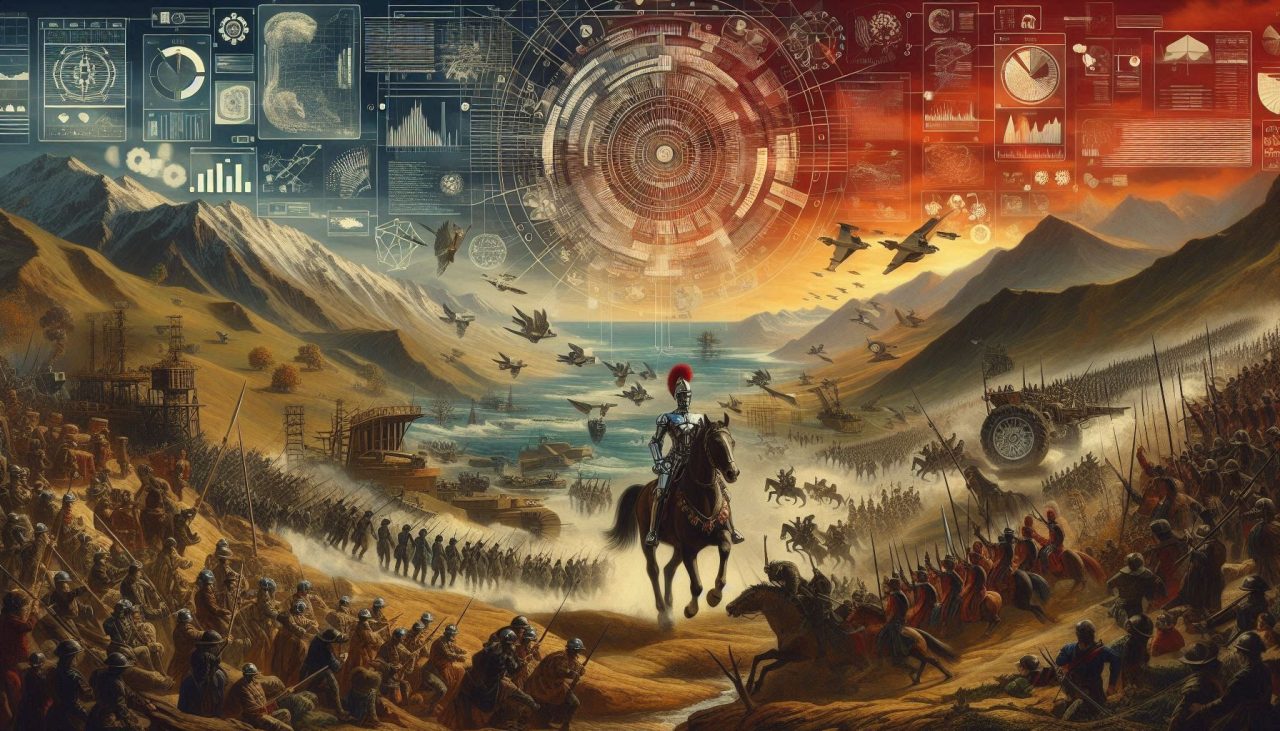Carl von Clausewitz’s claim that war is “a continuation of politics by other means” has survived railways, radio and nuclear weapons. Today the “other means” range from data-wiping malware that bricks ventilators to viral deep-fakes that never fired a shot. The central puzzle is whether these novelties merely change the character of war (the tools, tempo and terrain) or whether they erode its immutable nature of violence, chance and political purpose (Echevarria 2002; Strachan 2013).
International lawyers behind the Tallinn Manual 2.0 accept that a non-international armed conflict may now consist solely of cyber operations if the effects rival kinetic force (Schmitt 2017). Thomas Rid counters that almost all cyber activity is better classed as espionage, sabotage or subversion. Such attacks may be potent, but not war in the Clausewitzian sense (Rid 2017). The Russian “AcidRain” attack of February 2022 sits precisely on that fault-line: a single wiper disabled thousands of Ukrainian satellite modems and 5,800 German wind-turbines, yet no bombs fell (SentinelLabs 2022; Greenberg 2023). If violence is judged by effect on human life rather than by the immediate mechanics of injury, Clausewitz still works; if it is judged by physical harm alone, he wobbles.
The 2022 US National Defense Strategy elevates “integrated deterrence”, urging day-to-day campaigning below the armed-attack threshold (US DoD 2022). US Cyber Command’s doctrine of persistent engagement pushes the same logic into practice, contesting adversaries continually rather than waiting for crises (USCYBERCOM 2022). Fischerkeller and Harknett argue that such calibrated friction stabilises the domain; Lynch casts it as a new “power-sinew contest” in which outright war is the exception, not the rule (Fischerkeller & Harknett 2019; Lynch 2024). The danger is conceptual inflation: call every malicious packet “war” and escalation thresholds blur, yet forcing every new tactic into Clausewitz’s vocabulary risks missing genuine novelty.
Frank Hoffman’s once-handy term “hybrid warfare” now covers almost any sub-threshold activity. NATO’s recent work on cognitive warfare goes further, treating perception itself as decisive terrain and calling for a fresh taxonomy of “acts of cognitive war” (NATO Innovation Hub 2023). Clausewitz, writing in an age of limited literacy, rarely considered the deliberate collapse of an adversary’s shared reality as a line of operation. The gap is undeniable – but it need not be fatal if his categories can stretch.
| Clausewitzian element | Digital-age inflection | Illustrative case |
| Violence | Physical harm or systemic disruption that produces downstream human suffering | AcidRain modem wipe, 2022 |
| Chance | Amplified by tightly coupled networks where small code changes trigger cascading failures | Log4j exploit cascade, 2021 |
| Political purpose | Territorial control plus cognitive or behavioural manipulation | 2016 US election interference |
The table shows how old categories bend. Violence migrates into infrastructure; chance spikes in opaque systems; political purpose colonises the infosphere. None of these shifts removes politics from the centre – precisely why the trinity still maps the ground.
There are 3 key areas where Clausewitz’s wisdom holds strongly:
- Politics first. Colin Gray insists that strategy is the orchestration of means to political ends; replacing artillery with algorithms does not move that lodestar (Gray 1999).
- Escalation logic. Even in cyberspace, deterrence depends on adversaries reading tacit red lines. Clausewitz’s emphasis on uncertainty and friction remains apt.
- Human cost. Cyber operations hurt indirectly – frozen hospital wards, confused electorates – but the harm is felt by bodies in time and space, not by circuits.
There are however, a number of places where the strain shows, namely where:
- Systemic cyber harm approaches “force” while sidestepping bodily violence.
- Persistent, below-threshold campaigning blurs the war–peace boundary Clausewitz assumed.
- The trinity was never meant to classify acts aimed at belief rather than battalions.
For now, Rid’s scepticism still holds true – most cyber operations do not meet Clausewitz’s threshold of war. Yet as societies entangle their critical functions ever more tightly with code, the line between systemic disruption and physical violence narrows. Clausewitz’s trinity of violence, chance, political purpose – still offers the clearest compass, because politics, not technology, remains the centre of gravity of strategy. The compass, however, is being asked to steer across novel terrain. Should a future campaign achieve political aims through cyber-enabled systemic coercion alone, the Prussian might finally need more than a tune-up. Until then, his core logic endures, and while needing adaptation, it has not been eclipsed.
Bibliography
Clausewitz, C. v. (1832) On War. Berlin: Ferdinand Dümmler.
Echevarria, A. J. (2002) ‘Clausewitz’s Center of Gravity: Changing Our Warfighting Doctrine – Again!’. Carlisle, PA: US Army Strategic Studies Institute.
Fischerkeller, M. P. and Harknett, R. J. (2019) ‘Persistent Engagement, Agreed Competition, and Cyberspace Interaction Dynamics’. The Cyber Defense Review.
Gray, C. S. (1999) Modern Strategy. Oxford: Oxford University Press.
Greenberg, A. (2023) ‘Ukraine Suffered More Wiper Malware in 2022 Than Anywhere, Ever’. WIRED, 22 February.
Lynch, T. F. III (2024) ‘Forward Persistence in Great Power Cyber Competition’. Washington, DC: National Defense University.
NATO Innovation Hub (2023) The Cognitive Warfare Concept. Norfolk, VA: NATO ACT.
Rid, T. (2017) Cyber War Will Not Take Place. Oxford: Oxford University Press.
Schmitt, M. N. (ed.) (2017) Tallinn Manual 2.0 on the International Law Applicable to Cyber Operations. Cambridge: Cambridge University Press.
SentinelLabs (2022) ‘AcidRain: A Modem Wiper Rains Down on Europe’. SentinelOne Labs Blog, 31 March.
US Cyber Command (2022) ‘CYBER 101 – Defend Forward and Persistent Engagement’. Press release, 25 October.
US Department of Defense (2022) National Defense Strategy of the United States of America. Washington, DC.
